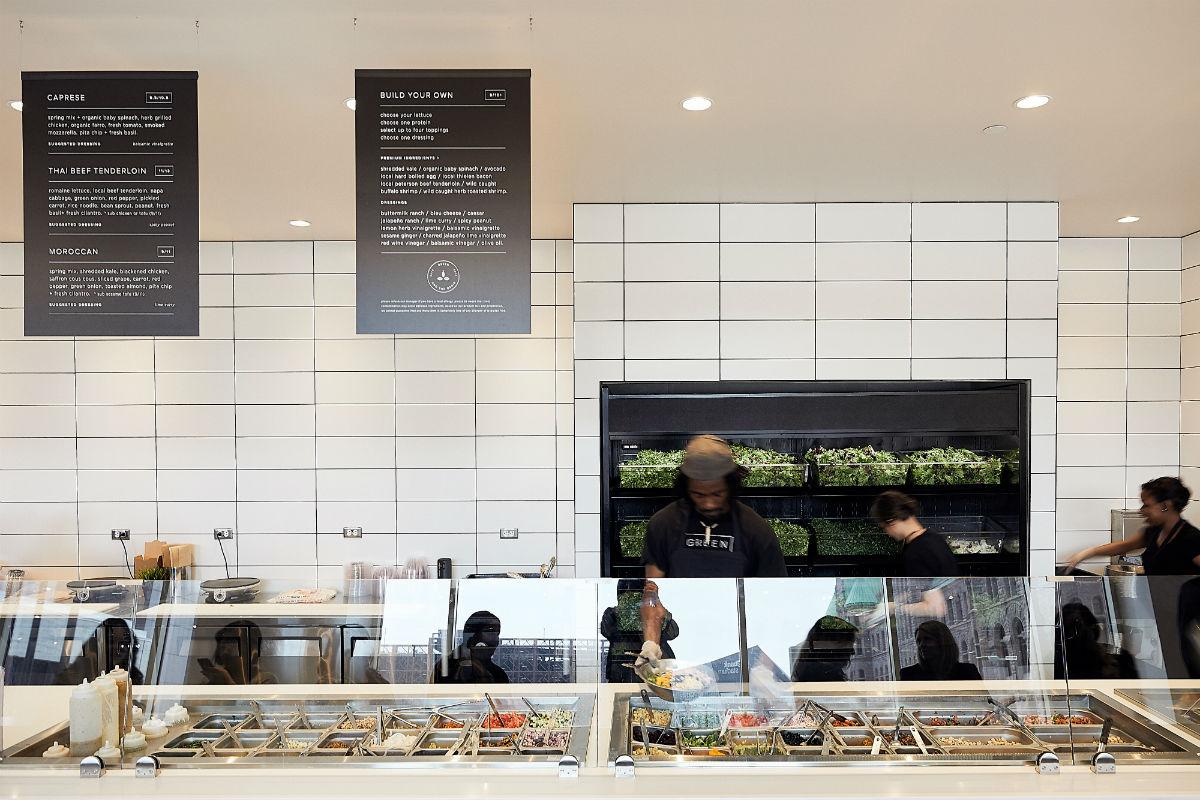At Shea, we pride ourselves on staying on top of what’s happening in design news. It helps us keep tabs on what’s fresh, inspiring, and happening in the world—and we make a few headlines of our own, too. Here are some recent articles delving into design, experience, and what’s buzzing in our community:
“Three Future Food Trends” – Foodservice Equipment & Supplies:
A look at what’s next in food trends, according to a food-innovation company, and how it can affect design and equipment use in restaurants. One trend is health-based diets, with customers looking to have more options and variety in their choices than ever as they try different ways of eating. Automation in food prep is a big part of this, because conveyors and machines can create customizable dishes. Sustainability is also in the rise, with more restaurants marketing their eco-consciousness and looking for ways to express that via design. Finally, experience continues to be top of mind for guests—maximizing visibility and transparency and the rise of eatertainment exemplify this.
“Shea-Shows Off New-Construction Element by Westin”– Shea:
A video showing the process of building the new Element by Westin in Bloomington, a Shea-designed seven-story hotel
“Nowhere to Meet? How Google and Others Are Changing How Workers Collaborate” – Work Design:
This piece focuses on how to best integrate technology into workplace design—by focusing on collaborative workplace culture and letting technology work itself into the space. Design is now about understanding what employees want and where they go when they enter the office, and creating a good work experience by creating spaces that are conducive to collaboration. This means talking to the employees to figure out what works best, and creating specific meeting spaces that are insulated as well as collaborative huddle spaces that are in the heart of the action and allow for employees to bring their technology with them. Google serves as a case study, where there are plenty of informal meeting spaces and each team is given a “space budget” to create their own formal meeting area that best works with the team needs.
“Why Your Favorite Restaurant Also Has a Butcher Shop” – Eater:
Eater looks at the rise of bespoke butcher shops tied to restaurants in a hybrid business model. This not only serves the purpose of drawing customers with two different objectives (eating and buying), but is helping to bring back the practice of whole-animal butchery and a decrease in food waste—along with the beneficial “buying local” aspect. This piece looks at several butcher shops around the country that are pioneering the next generation of the farm-to-table movement, with locally raised meat butchered in-house, and dishes designed to maximize the output from the butcher shop.
“A Quiet Respite in a Bustling Open Workplace” – New York Times:
Despite the cost-cutting and (theoretical) team benefits of open offices, they make confidential conversations difficult. The Times looks at options for open-plan offices looking to give employees a place for privacy, from phone booths to meeting pods and huddle rooms, as workplace construction begins to shift away from open offices. These nooks and spaces allow employees to get heads-down work done in the midst of bustling spaces, and also include prayer rooms, wellness rooms, and libraries. Some pods come in ready-to-assemble kits, and are not exclusive to executives at the top of the hierarchy—they’re for everyone to share.
“New Hotel Design Has a Local Point of View” – Finance & Commerce:
As hotels continue to become more and more competitive in densely packed urban areas, they’re embracing locality in their design, looking to their cities and neighborhoods to create living-room-inspired spaces that are comfortable and tie into the environs. Lobbies continue to evolve as communal meeting and amenity spaces, and outdoor areas embrace the surrounding nature—and they’re drawing local use for work and play as well as serving as guest spaces. Residential-scale furniture and finishes inspire the idea of home, letting people feel like natives to the city where they’re staying. And in guest rooms, self-care and tech amenities are taking top priority.
“Shea Partners Earn James Beard Award Semifinalist Nods” – Shea:
The full list of James Beard Award semifinalists, including Shea partners Gavin Kaysen, Demi, Diane Moua, Jamie Malone, and more.
“Trends in Workplace Amenities, Design Reflect Changing Culture” – Talk Business:
As many companies have adopted a more relaxed workplace, their primary goals have shifted—and design needs have shifted accordingly. Workplaces need to serve as destination spots for their employees: bringing them together, fostering culture and connections, and giving them resources to work effectively. Amenities such as upgraded lounges and wellness areas are popular, as are environmental-wellness factors. And flexible office space is key—people want to be able to use areas in multiple ways that best suit their needs for the day.
“How Many Hotel Brands is Enough?” – New York Times:
The hotel market is becoming constantly more crowded, with hotel chains presenting an array of brand options that offer different experiences—but it’s key that each brand has a clear identity. Hilton has 18 brands, Marriott manages 30, and Hyatt has 14—but the companies continue to launch new brands with belief that there’s space in the marketplace. It’s about defining an audience, deciding what the brand will stand for, and how it will be different from what’s already out there.
“Shea Ranks on Interior Design’s List of Top Giants” – Shea:
Interior Design magazine’s list of Top Giants for 2020, featuring Shea
March 6, 2020
Shea Links: March

